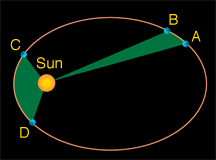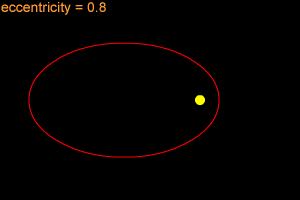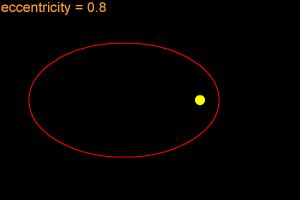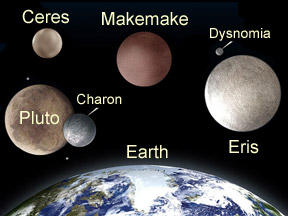Perihelion and Aphelion
The planets in our Solar System orbit around the Sun. Some orbits are almost perfect circles. Other orbits are more like "stretched out" circles or ovals. Astronomers call these oval shapes "ellipses". When a planet orbits the Sun along an ellipse, sometimes it gets closer to the Sun. At other times, the planet moves further away from the Sun. When the planet is closest to the Sun, we say it is at "perihelion". When it is farthest away from the Sun, we say that it is at "aphelion". Earth moves about 5 million km (over 3 million miles) further away from the Sun at aphelion than at perihelion! You might guess that Earth is warmer at perihelion because it is closer to the hot Sun. You might think that our seasons are caused by Earth moving closer to the Sun and further away, but that is NOT true! Perihelion, when Earth is closest to the Sun, happens in January. That is the middle of winter in the Northern Hemisphere! The real reason for our seasons is that Earth is tilted a bit. A planet moves at different speeds as it goes around its orbit. It moves fastest at perihelion. It moves slowest at aphelion. Asteroids, many comets, and some spacecraft also move around the Sun along an ellipse. They all have perihelion and aphelion points along their orbits, too. Some planets have very "stretched out" orbits. Pluto is much further from the Sun at aphelion than it is at perihelion. Astronomers say that a "stretched out" orbit has a high eccentricity. An orbit with a high eccentricity is long and skinny, not round like a circle. (Note: If you cannot see the animation on this page, or it is not working properly, you may need to download the latest Flash player.) |
 Interactive animation illustrating shapes of orbits
Interactive animation illustrating shapes of orbits















